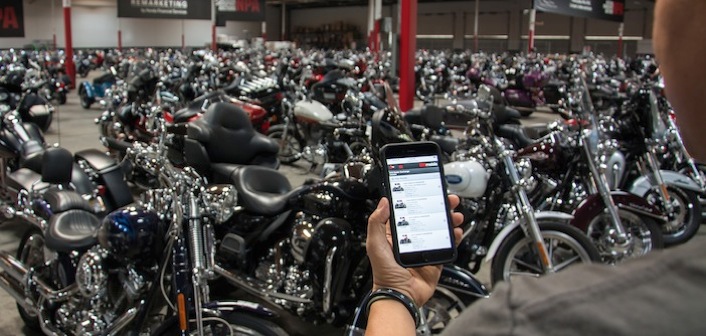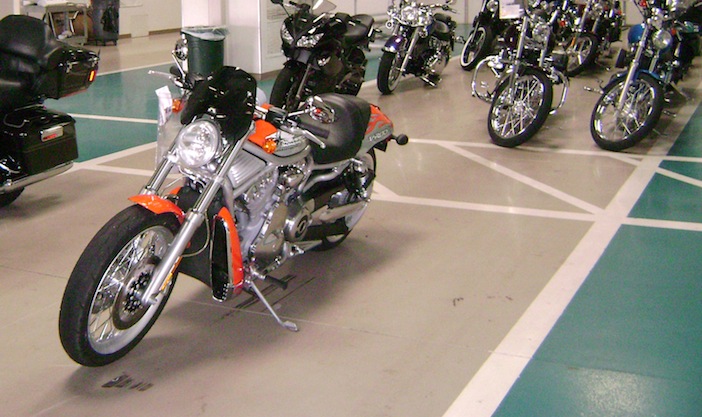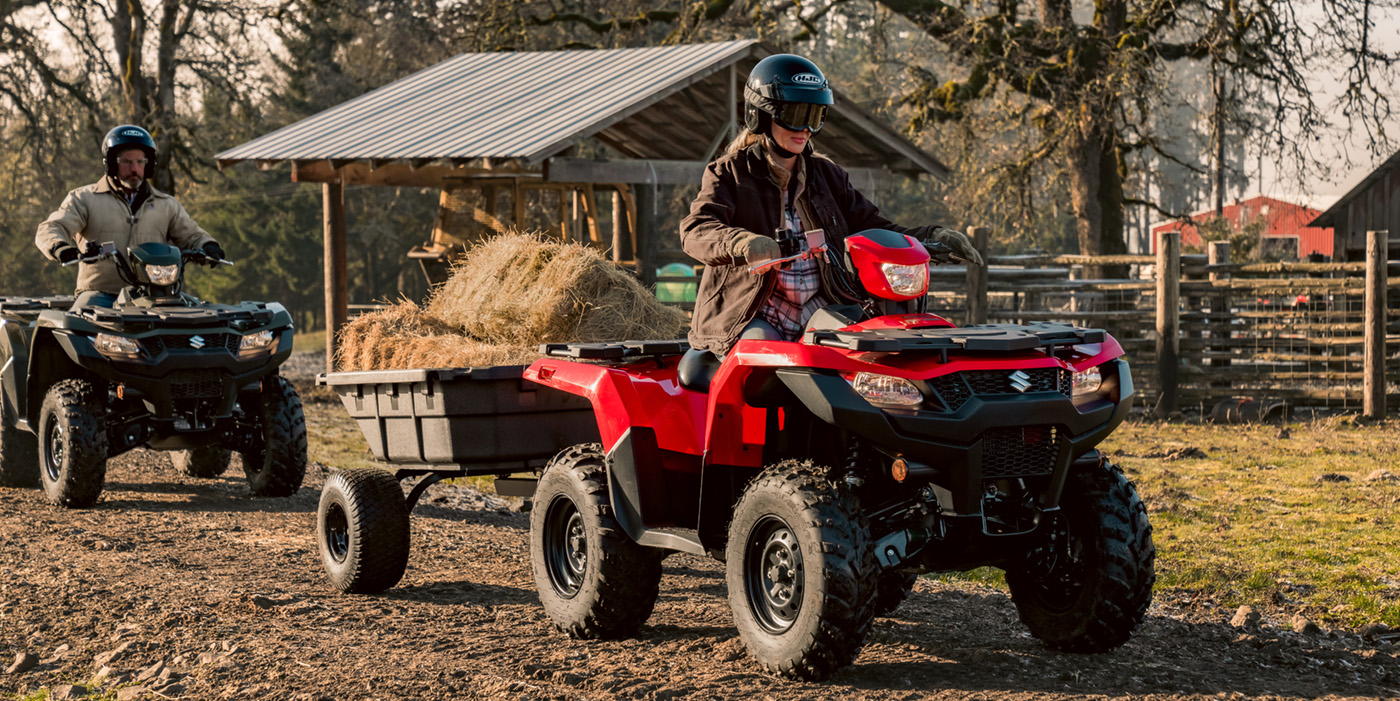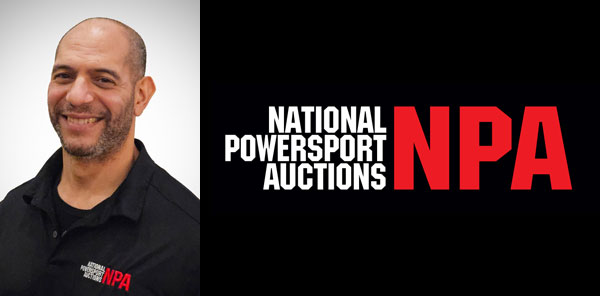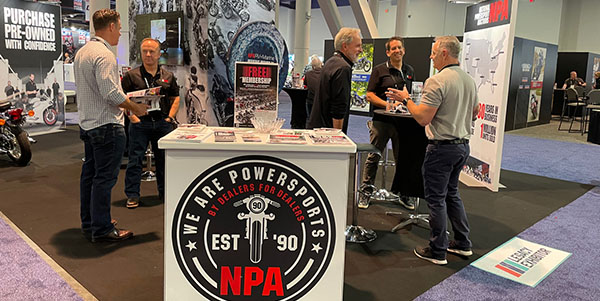How powersports dealers are using auctions today
There are few things more exciting than attending a live auction, especially when you are interested in the item up for bid. The atmosphere can be contagious – one of high energy and competition. However, auctions in the world of motorcycles and powersports are seeing a decline in the number of dealers coming to live auctions and an increase in those doing business online or through mobile applications. To dealers these days, auctions are just that, part of their business. It’s less about the excitement and more about keeping their inventory in check.
Last year, we took a look at what dealers were doing to make use of auctions via the Internet and mobile applications, and the trend has continued this year growing to even greater numbers. But that’s not the only thing dealers are doing with auctions these days. They are also using auctions to help manage their inventory, both new and pre-owned, and are buying and selling items from further away than ever before. MPN spoke with several companies about how auctions are helping dealers succeed.
Inventory Management
It wasn’t too long ago that a dealer would keep a unit on the showroom floor and continually mark down the price until it would sell. That mentality could potentially take years to sell a particular unit. So how long should a unit sit? The answer might be much shorter than you originally thought. This is where auctions can play a role.
“Inventory management is the thought process that turn time is becoming more and more important,” says Ryan Keefe, director of marketing at National Powersport Auctions (NPA). “Ninety days is the average turn time. By that time everybody has been able to view that product once or twice and it’s time to bring in something new.”
Today, you can no longer count the number of people coming through the door as those who have seen a unit. Dealers have their own online showrooms that have to be considered in the calculation as well.
“If a unit hits the 120-day mark, it is not working for you anymore,” says Jim Woodruff, COO at NPA. “You need to replace that capital with a unit that is going to move. Even if you have to take a bit of a loss, it’s losing less than sitting on it.”
In the last five or six years, inventory management has become increasingly more important. To run a healthy business, strong inventory management is vital.
“What we saw during the recession is if you didn’t have a good inventory management plan you ran into problems,” says Rich Coutu, vice president of commercial sales at Manheim. “So it’s always been a key component of running a healthy business; knowing what to buy, when and where to buy it, what to pay for it, how long to hold it, and understanding the expenses related to that.”
These expenses to need to be top of mind for dealers today because they are dealing with a much more educated consumer.
“Consumers have so much access to information that when they walk onto a lot looking to make a purchase, they know what they’re talking about,” Coutu says. “They know what the value of the vehicle is and they know the little questions to ask. So being able to manage inventory more tightly is a critical component for the success of dealers across the country. What we are seeing is a more responsible strategy when it comes to inventory management. It’s become much more precise.”
The recent rise in dealers paying attention to inventory management has been partly due to more inventory being available lately.
“Because new motorcycle sales are up, which causes used sales to go up and more trade-ins, that causes dealers to bring their inventory to auction, and a lot of it has to do with managing inventory and trying to have a turn cycle,” says Jane Morgan, president, specialty sales division for ADESA. “Today, dealers are much more savvy about how important it is for that inventory to stay fresh and what
you cycle to the front has to be new in order to get customers to stop.”
The beauty of the auction is that a unit is going to sell. The dealer just has to be willing to go that route.
“Many times, dealers will say they want to put a reserve on that unit and if it sells for anything more than that, go ahead,” Woodruff explains. “Nobody knows what that unit is really worth until the auction comes around. So that expectation management of what people think something’s worth versus what the free market says it’s worth is the main thing that governs how quickly something sells.
“If a selling dealer’s expectations are reasonable or if they trust the free market to say whatever it brings is what it’s worth then it’s going to sell immediately. If someone really wants more money than it’s worth it may take longer or they’re not going to sell it.”
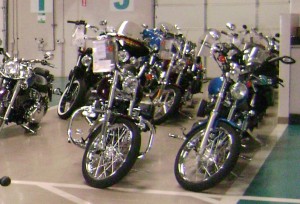 The Math of Inventory Management
The Math of Inventory Management
Before dealers bought into inventory management, many of them would mark down the value of a unit over and over and over again. Another thing that used to happen more often was dealers would turn down trade-ins.
“Dealers are getting smarter about that, and now they are taking the inventory and if they have a good plan they will send undesired units to auction,” Woodruff says. “And the stuff dealers are sitting on and the stuff that gets old, dealers are getting smarter about how long they should sit on it. Some dealers didn’t do pre-owned before, and now they are.”
Sitting on a unit costs money. So if you’re not selling it, you don’t have any income to offset your costs. One of the biggest expenses is opportunity cost.
“If you have a unit (or money tied up in something) and on average you’re making $1,000 a unit: if you’re not selling it, you didn’t make anything,” Woodruff explains. “If you’re turning four times a year, you could be making $1,000 (4X) a year multiplied by however many units you sell. If you’re not selling it, you made zero. If your policy is to sit on it until it sells: maybe it sells in the year and you make $1,000, but you could have made $4,000. No money is made until the unit turns.
“You need to let it sit long enough for the appropriate customer to come through the door, but for the most part if it’s that 90 days and the right person hasn’t come through the door, they’re not going to. And things change like new models, preferences, gas prices, OEM rebates, and more.”
Holding on to a unit for too long can also have a psychological effect on your sales team and customers.
“If you have a sales team and you have a unit that has been sitting for a while, the motivation to move that inventory goes down,” Woodruff says. “People like to focus on the new or fresh stuff from a sales team perspective. People coming through the doors who have seen a bike sit for three months won’t be interested in it, or they will work the sales guy for a ridiculous deal, neither of which is healthy.”
 NPA says to think of pre-owned inventory like a fruit stand – as fruit gets older it gets moved further back on the stand – but there is no reason that inventory can’t go to auction before it gets sour.
NPA says to think of pre-owned inventory like a fruit stand – as fruit gets older it gets moved further back on the stand – but there is no reason that inventory can’t go to auction before it gets sour.
“Just because it can’t sell in your dealership, we are selling to more than 500 dealers at each auction, and it’s another opportunity for another dealer to take advantage of that,” Keefe says.
Overall, dealers have more confidence in taking a trade to facilitate a sale knowing they have options and outlets to move that inventory.
“We’re seeing an uptick in dealer consignments, which tells me there is more inventory in the marketplace, but through the use of digital platforms they can put a number on that trade and move that inventory knowing it won’t sit on their lot for retail sale,” Coutu says. “They know what they’re taking in, they know what it’s worth, they know what they can get for it, and they know how to sell it. That’s where auctions can help by not having to worry about that. Bring us the inventory and we’ll help you create the right channel to sell it.”
Going the Distance
Another way auctions and technology have helped dealers handle inventory is by getting vehicles out of the market.
“Lets say in a local market you’re having a hard time moving a sport bike because every other dealer in the market has the same sport bike,” Woodruff says. “By liquidating it through auction there is a fair chance it will leave your market and go somewhere that sport bikes are needed. You can get more money through the auction than you could in your local market, and you reduce the number of seats for that particular bike in your market, which makes vehicles in your market worth more.”
With all the tools at the fingertips of dealers today and the many ways auctions can help them keep inventory fresh, they are becoming more willing to sell and buy units from greater distances.
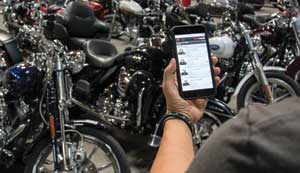 “Historically, if you were going to an auction to buy a bike, you’d go to the physical sale and there is only so much ground you can cover,” Coutu says.
“Historically, if you were going to an auction to buy a bike, you’d go to the physical sale and there is only so much ground you can cover,” Coutu says.
“Now you have buyers buying inventory across state lines and as far as 500 to 800 miles away because of access to more inventory due to digital platforms. It’s been a positive thing and taken some of the seasonality out of it.”
This trend of dealers going further to buy and sell does come into play more because of the seasonality of the recreation in certain areas, but also because of competition within local areas.
“Dealers are willing to travel further for their inventory or buy online further away when the demand is there and they need the product in order to not lose customers to their competitor,” Morgan says. “It’s not uncommon for a California buyer to buy from Kansas City.”
Education
No matter how well a dealer is managing inventory, what makes all the technology options and auction opportunities worthwhile to dealers is a constant flow of education.
“From an auction perspective, we may not help them directly with inventory management, because that is something they have to do on their own, but our job is to help them in the most efficient and cost effective manner to move that inventory,” Coutu explains. “We work with customers to develop plans and strategies that work for them. When dealers have a plan and inventory, we will guide them on where to sell it and how much to sell it for.”
ADESA also offers to help dealers become educated on how they can utilize auctions, but the company takes it one step further with classes.
“In our auction 101 classes we try to make sure the dealer understands the cost all-in on that bike to have it front line ready, and know how much room there is to have it retailed,” Morgan says. “Know your transportation cost, know your fees associated with it, know your book values and retail values. We encourage doing your homework and understanding values. Just because you pay for something on the front end, doesn’t mean when you sell it you’re going to get back what you paid.”
ADESA will either host classes that dealers can attend, or it will even do onsite classes. Similarly, NPA has hosted classes in the past and is expanding that service this year. In addition, it will also do consultations with dealers to help them better understand how they can take advantage of its services.
“The dealer today is the only one who can see his inventory, so typically we will sit down with the dealer and take a look at what’s in their inventory,” Woodruff says. “The consultative process is really just looking at what they have, what their policies are, what policy adjustments might need to be made and then for those units that need to be moved, provide them the information to make a smart decision.”
Whether you still prefer to physically walk the lanes of an auction or get online via a computer or mobile device, auctions need to become a resource for managing your inventory both new and used.

